Sept. 30, 2024
Prelims Pointers
Sept. 30, 2024
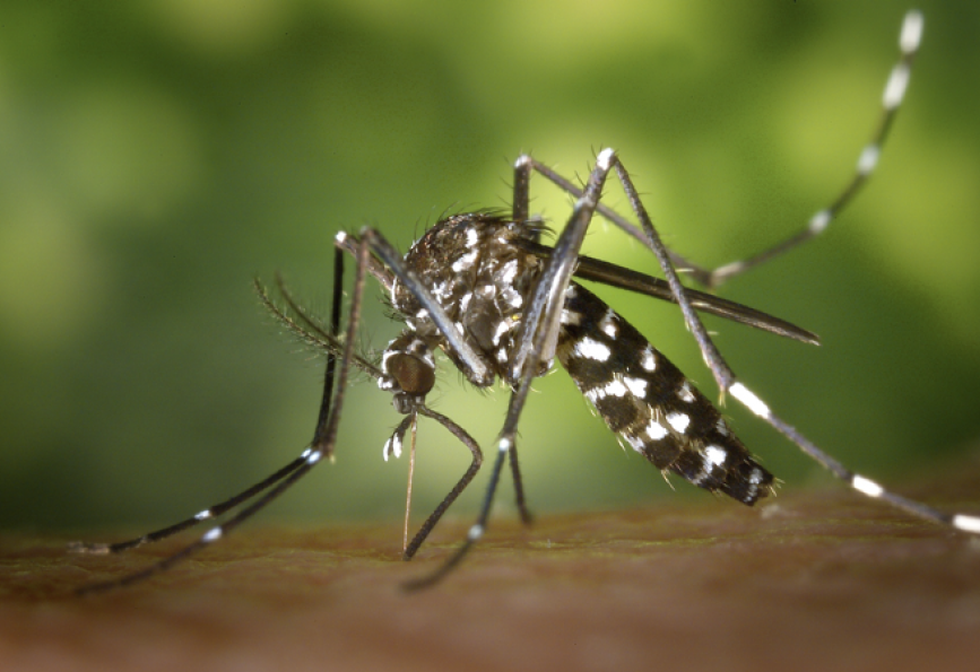
About Chikungunya:
- It is a viral diseasetransmitted to humans through the bites of mosquitoes infected with the chikungunya virus.
- The word comes from the African Makonde language and means "bent over in pain."
- Transmission:
- It is most commonly transmitted by mosquitoes, Aedes (Stegomyia) aegypti and Aedes (Stegomyia) albopictus, which can also transmit dengue and Zika viruses.
- It is not spread from person to person.
- It was first described during an outbreak in southern Tanzania in 1952 and has now been identified in nearly 40 countries in Asia, Africa, Europe and the Americas.
- Symptoms:
- Symptoms usually begin 4 to 8 days after a mosquito bite but can appear anywhere from 2 to 12 days.
- The most common symptom is an abrupt onset of fever, often accompanied by joint pain.
- Other symptoms include muscle pain, headache, nausea, fatigue, and rash.
- Serious complications are uncommon, but atypical severe cases can cause long-term symptoms and even death, especially in older people.
- Treatment:
- There is currently no approved vaccine or specific treatmentfor chikungunya virus infections.
- The goal of treatment for the infection is to relieve symptoms with rest, fluids and drugs.
Prelims Pointers
Sept. 30, 2024
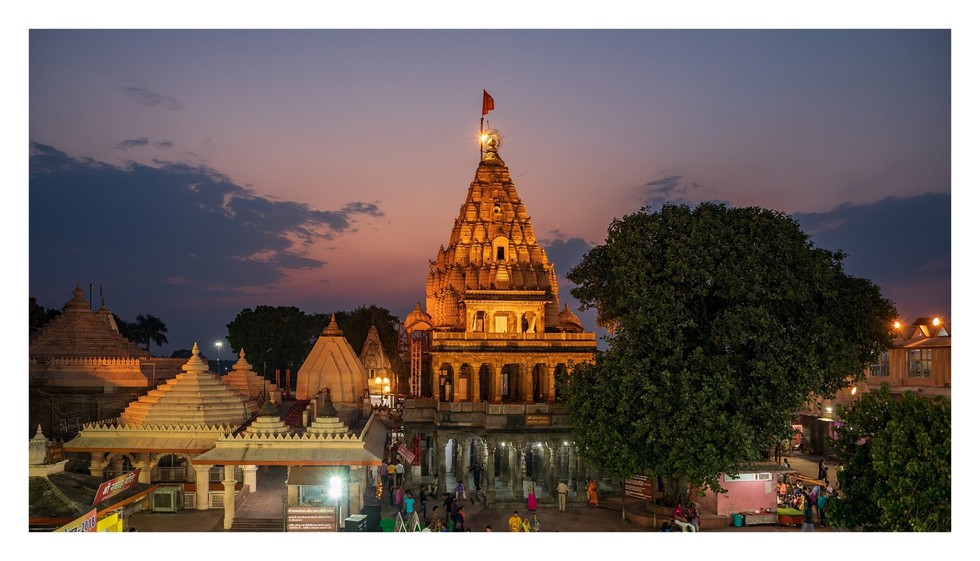
About Mahakaleshwar Temple:
- It is a Hindu temple dedicated to Lord Shiva.
- Location: It is located in the ancient city of Ujjain in the state of Madhya Pradesh.
- The temple is situated on the banks of the holy river, Shipra, tributary of Chambal river.
- It is one of the twelve Jyotirlingasof Lord Shiva.
- The real establishment date/period of the temple cannot be ascertained, but the earliest references to the Mahakal are from the 6th century BC. The temple, in its present form, was reconstructed in the 18th century AD.
- It is also known as one of the seven 'Mukti Sthal' or sacred places of liberation in India.
- Architecture:
- It is a five-storied The main shrine is located underground.
- The temple complex comes with a spacious courtyard that is adorned with finest sculptures that are believed to be influenced by Chalukya, Maratha, and Bhumija styles of structural design.
- The foundation and platform are built of stones. Most of the upper structure rests on the strong and well-designed pillars and plasters.
- It is complete with impressive lingam sculptures of Mahakaleshwar.
- The images of Ganesh, Parvati, and Karttikeya are installed in the west, north, and east of the sanctum sanctorum.
- The temple also houses a tank constructed in the sarvatobhadra style.
Prelims Pointers
Sept. 30, 2024
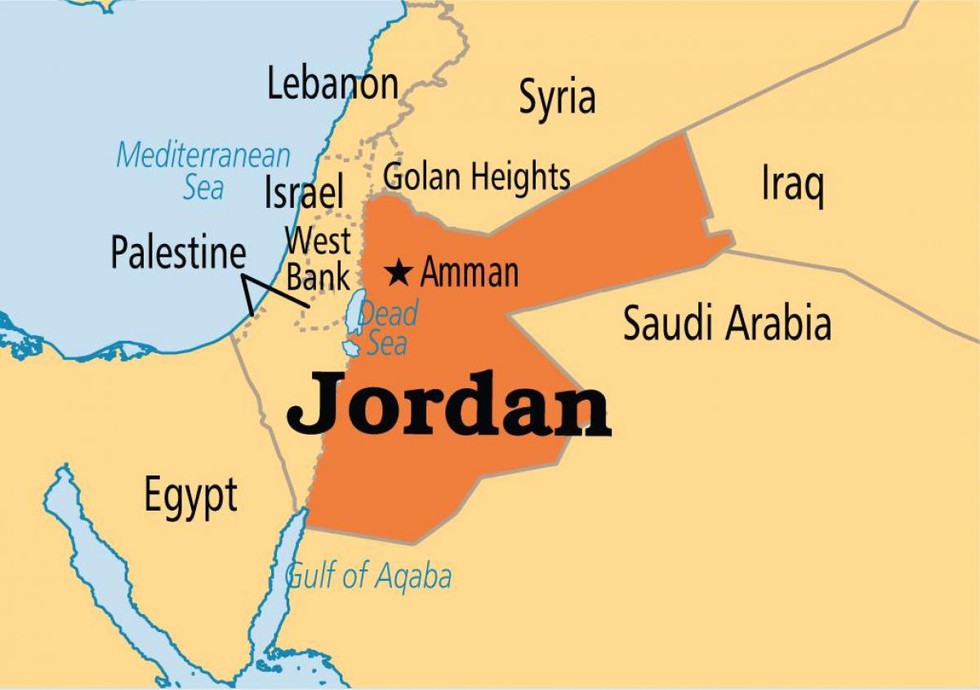
About Jordan:
- It is an Arab country of Southwest Asia, in the rocky desert of the northern Arabian Peninsula.
- It is named for the Jordan River, which passes on its western border.
- It occupies an area of around 91,880 sq. km.
- Bordering Countries: It is bounded to the north by Syria, to the east by Iraq, to the southeast and south by Saudi Arabia, and to the west by Israeland the West Bank.
- The capital and largest city in the country is Amman—named for the Ammonites, who made the city their capital in the 13th century BCE.
- Jordan has 16 miles (26 km) of coastline on the Gulf of Aqaba (Red Sea)in the southwest, where Al-ʿAqabah, it's only port, is located.
- Jordan has three major physiographic regions (from east to west): the desert, the uplands east of the Jordan River, and the Jordan Valley (the northwest portion of the great East African Rift System).
- The desert region is mostly within the Syrian Desert—an extension of the Arabian Desert—and occupies the eastern and southern parts of the country, comprising more than four-fifths of its territory.
- The Jordan Valley region contains the Dead Sea.
- Language: The official language is Arabic.
- Currency: Jordanian dinar
Prelims Pointers
Sept. 30, 2024
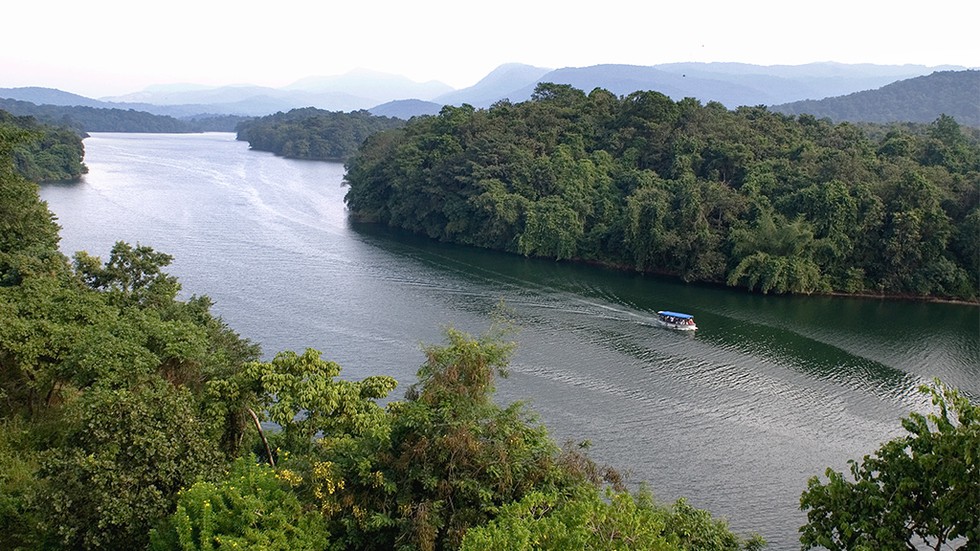
About Peechi -Vazhani Wildlife Sanctuary:
- Location: It is located in Thrissur District, Kerala.
- Spread across 125 sq. km, the Peechi-Vazhani Wildlife Sanctuary was established in 1958.
- It is situated in the catchment area of the Peechi and Vazhani Dams.
- It is part of the Palapilii-Nelliyampathy forests and forms the northern boundary of the Chimmini Wildlife Sanctuary.
- Vegetation: Forest Types include tropical evergreen forests, tropical semi evergreen forests, moist deciduous forests, etc.
- The terrain is undulating, the altitude varies from 100 to 914 m, with the highest peak being Ponmudi.
- Flora: There are more than 50 different kinds of orchids, innumerable rare medicinal plants, and trees of high commercial value like teak, rosewood, and so on.
- Fauna: The wildlife population includes over 25 types of mammals, including carnivores like the leopard, the tiger, and the fox, and herbivores like the elk, deer, barking deer, spotted deer, the gaur, and the elephant.
Prelims Pointers
Sept. 30, 2024
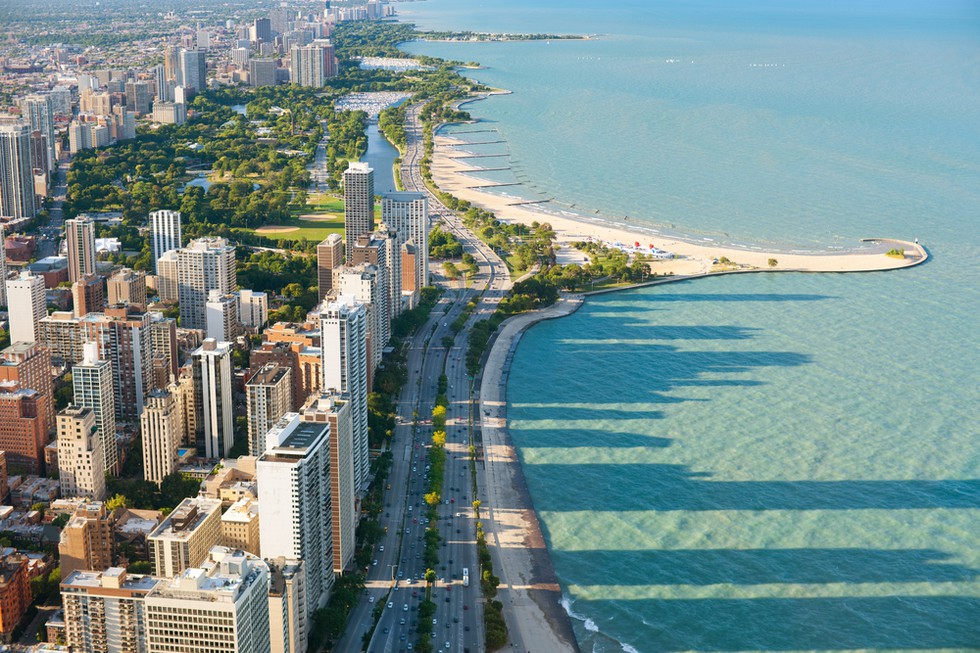
About Lake Michigan:
- It is the third largest of the five Great Lakes of North America and the only one lying wholly within the United States.
- It is the fourth largest freshwater lake and the fifth largest lake in the world ranked by surface area.
- The lake is 321 miles (517 km) long (north to south); it has a maximum width of 118 miles (190 km).
- Drainage basin area: 45,600 square mi (118,095 square km)
- Lake Michigan is connected directly to Lake Huron, into which it drains, through the broad Straits of Mackinac.
- This hydrologic connection through the Straits keeps the water levels of the two lakes in equilibrium, causing them to behave in many ways as though they are one lake.
- Water flows into Lake Michigan from several rivers in the 45,600 square mile Lake Michigan drainage basin, including the Fox-Wolf, the Grand, the Joseph, and the Kalamazoo rivers, among others.
- The lake boasts a variety of natural habitats, including tallgrass prairies, wide savannas, and the world’s largest freshwater sand dunes.
- It hosts a wealth of plant and animal species, many of which are rare or endangered (such as the Hine’s Emerald Dragonfly and the Dwarf Lake Iris).
Prelims Pointers
Sept. 30, 2024

About Canary Islands:
- It is an archipelago located in the Atlantic Ocean.
- It is about 1300 km South of mainland Spain and 115 km West of the African coast (Morocco).
- The Canaries comprise the Spanish provinces of Las Palmas and Santa Cruz de Tenerife.
- These Islands were formed by volcanic eruptionsmillions of years ago.
- Climatic condition
- They have a subtropical climate. Temperatures are warm and show little seasonal variation.
- It has rich volcanic soils and mild temperatures that support a wide variety of vegetation that generally follows a zonal arrangement based on elevation.
What is an archipelago?
- It is a term used to describe a group or chain of islands that are closely scattered in a body of water, such as a sea, ocean, lake, or river.
- Formation: These islands are typically formed through geological processessuch as volcanic activity, tectonic movements, or the accumulation of sediment.
Prelims Pointers
Sept. 30, 2024

About Ethanol:
- It is an agricultural by-product which is mainly obtained from the processing of sugar from sugarcane, but also from other sources such as rice husk or maize.
- Ethanol appears as a clear colorless liquid with a characteristic vinous odor and pungent taste.
- Since ethanol is produced from plants that harness the power of the sun, it is also considered as renewable fuel.
- In India, ethanol is mainly produced from sugarcane molasses by fermentation process.
- Ethanol blending is the process of combining ethanol and petrol to use less fossil fuel while driving a vehicle.
- To supplement ethanol supplies, the Government of India has permitted the procurement of ethanol produced from sources other than molasses, which is known as first generation ethanol or 1G.
- Apart from molasses, ethanol can be derived from rice straw, wheat straw, maize cobs, corn stover, bagasse, bamboo and woody biomass, which are known as second generation ethanol sources or 2G.
- Applications
- Ethanol is an important industrial chemical; it is used as a solvent, in the synthesis of other organic chemicals, and as an additive to automotive gasoline.
Prelims Pointers
Sept. 30, 2024
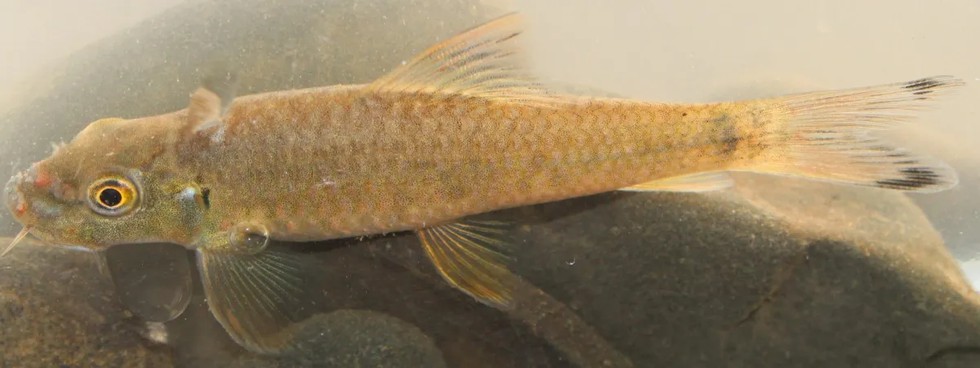
About New Fish Species:
- These are new species of torrent minnows.
- A torrent minnow is a small freshwater fish belonging to the genus Psilorhynchus within the family Psilorhynchidae.
- These fish are commonly found in fast-flowing streams, particularly in regions with strong currents such as rivers and mountain streams
Garra zubzaensis
- It was found in the Zubza River, a tributary of the Brahmaputra River in Kohima district.
- The river, with its mix of gravel, cobbles, and sand, provides an ideal habitat for this benthic species.
- Habitat: These fish are specially adapted to live in fast-flowing, rocky streams, using their gular discs—sucker-like structures—to cling to surfaces and forage for food.
Psilorhynchus kosygini
- It was discovered in the Tepuiki River, a tributary of the Barak River in Nagaland’s Peren district.
- It belongs to a genus known primarily from South Asia and Southeast Asia.
- Habitat: This species was found in the fast-flowing, shaded waters of the Tepuiki River, where it thrives in the river's gravel and rocky substrate.
Prelims Pointers
Sept. 30, 2024

About National Centre of Excellence for AVGC:
- It will be set up as a Section 8 Company under the Companies Act, 2013 in India.
- The Federation of Indian Chambers of Commerce & Industry and Confederation of Indian Industry represent the industry bodies as partners with the Government of India.
- It aims at creating a world class talent pool in India to cater to the Indian as well as global entertainment industry.
- It is provisionally named the Indian Institute for Immersive Creators (IIIC), this center aims to revolutionize the AVGC sector and foster innovation in immersive technologies.
- It will be modeled after renowned institutions like the Indian Institutes of Technology (IITs) and Indian Institutes of Management (IIMs).
- Key objectives of the NCoE (IIIC):
- Focusing of creating Indian IP
- Leveraging our cultural heritage in new age
- Create a multiplier effect in the industry
- An industry led initiative, in partnership with state and academia
- Integrated focus on education, skilling industry, development, innovation
- Hub and spoke model of development to be followed
- IIIC as the hub and several center’s as its spokes dedicated innovation and research fund to promote start-up ecosystem
- Significance: This initiative is set to boost the economy while creating new job opportunities in the rapidly growing AVGC sector.
- As a global hub for filmmaking, India's advancements in technology and infrastructure will enable the production of high-quality content, positioning the country as a leader in technological innovation and creativity.
Prelims Pointers
Sept. 30, 2024
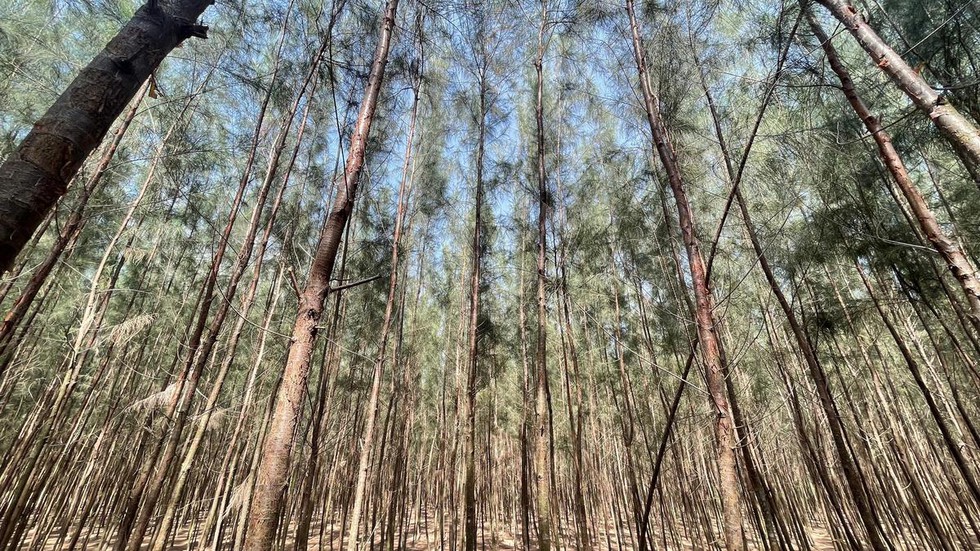
About Casuarina Tree:
- It is native to Australia and it was introduced in India around the 19th century.
- It is also known as kattadi and savukku.
- There are four cultivated species of casuarinas viz., Casuarina equisetifolia, Casuarina glauca, Casuarina cunninghamiana and Casuarina junghuhniana.
- The nitrogen fixing ability and adaptability to grow in a wide range of soil and climatic conditions including moisture and nutrient limited sites makes Casuarina a preferred choice for commercial and environmental planting programmes.
- Distribution: Casuarinas are widely planted in the tropics, subtropics and Mediterranean countries because of their ready adaptability to a variety of environmental conditions and also for their rapid growth performance.
- Climate:The trees are suited to a wide range of temperature from 10°C-33°C, from sea level upto 1500m and mean annual rainfall between 700 and 2000 mm.
- Soil:The trees are best suited to light soils. This species tolerates calcareous and slightly saline soils, but it is grown poorly on heavy soils such as clays.
- Uses
- Apart from fuel, the wood is extensively used for papermaking and of late is a preferred choice for biomass-based power generation.
- The straight cylindrical stems find use in rural house building and as scaffolds in construction sites.
- It is the principal species for developing shelterbelts in coastal areas and windbreaks for protecting agricultural crops.
- It also plays a key role in reclaiming mined areas and afforesting nutrient-poor sites.
Sept. 29, 2024
Prelims Pointers
Sept. 29, 2024

About Bharat 6G Alliance:
- It is a collaborative platform which aims to achieve universal and affordable connectivity, promote indigenous technology, and establish India as a global leader in the telecom sector.
- This platform consist of public and private companies, academia, research institutions, and standards development organizations, aims to lead the development and deployment of 6G technology in India.
- It will forge coalitions and synergies with other 6G Global Alliances, fostering international collaboration and knowledge exchange.
- The Alliance will enable India to become a leading global supplier of IP, products and solutions of affordable 5G and 6G and other future telecom solutions,
- Aim:To bring together Indian startups, companies, and the manufacturing ecosystem to establish consortia that drive the design, development and deployment of 6G technologies in India.
- One of the key goals of B6GA is to facilitate market access for Indian telecom technology products and services, enabling the country to emerge as a global leader in 6G technology.
Prelims Pointers
Sept. 29, 2024
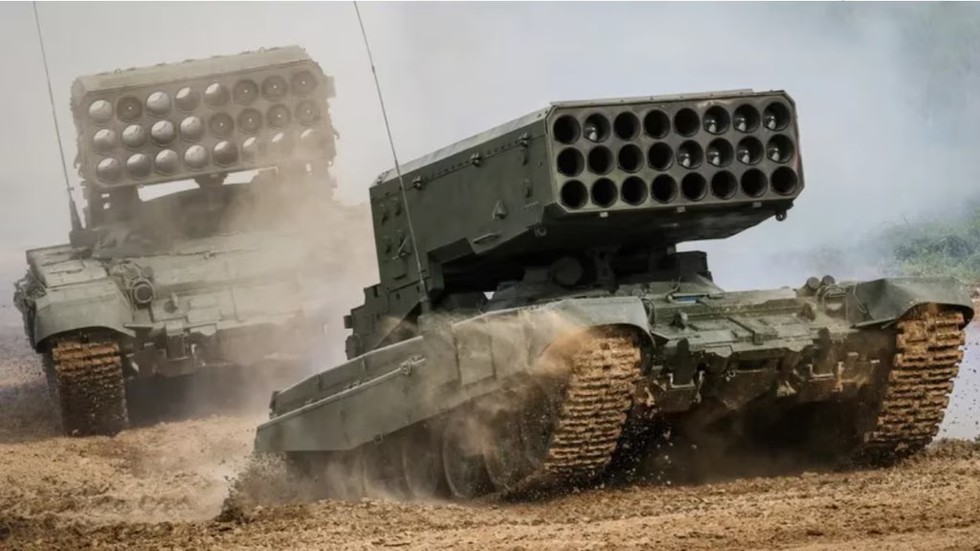
About Thermobaric Weapons:
- These are often called “vacuum bombs” or “enhanced blast weapons”.
- Working
- It consists of a fuel container with two separate explosive charges.
- This can be launched as a rocket or dropped as a bomb from aircraft. When it hits its target, the first explosive charge opens the container and widely scatters fuel mixture as a cloud.
- This cloud can penetrate any building openings or defences that are not totally sealed.
- A second charge then detonates the cloud, resulting in a huge fireball, a massive blast wave and a vacuum which sucks up all surrounding oxygen. The weapon can destroy reinforced buildings, equipment and kill or injure people.
- Impacts: The shockwave produced by thermobaric bombs can destroy structures, while the blast’s pressure differential causes catastrophic damage to the human body, including rupturing organs and lungs.
- There are no international laws specifically banning their use, but if a country uses them to target civilian populations in built-up areas, schools or hospitals, then it could be convicted of a war crime under the Hague Conventions of 1899 and 1907.
Prelims Pointers
Sept. 29, 2024

About Schizophrenia:
- It is a chronic, severe mental disorderthat affects the way a person thinks, acts, expresses emotions, perceives reality, and relates to others.
- It mostly affects young adultsin the productive age group.
- One in every 100 people experiences schizophrenia and men are twice as likely to develop this condition as compared to women.
- Symptoms of Schizophrenia:
- It can differ from person to person, but they generally fall into three main categories: psychotic, negative, and cognitive.
- Psychotic symptoms include Hallucinations, Delusions, thought disorder, Movement disorder.
- Negative symptoms include loss of motivation, loss of interest or enjoyment in daily activities, withdrawal from social life, difficulty showing emotions, and difficulty functioning normally.
- Cognitive symptoms include problems in attention, concentration, and memory.
- Treatment:
- Though there is no cure for schizophrenia, a variety of antipsychotic medications are effective in reducing the psychotic symptoms present in the acute phase of the illness.
- Psychological treatments such as cognitive behavioral therapy or supportive psychotherapy may reduce symptoms and enhance function.
Prelims Pointers
Sept. 29, 2024
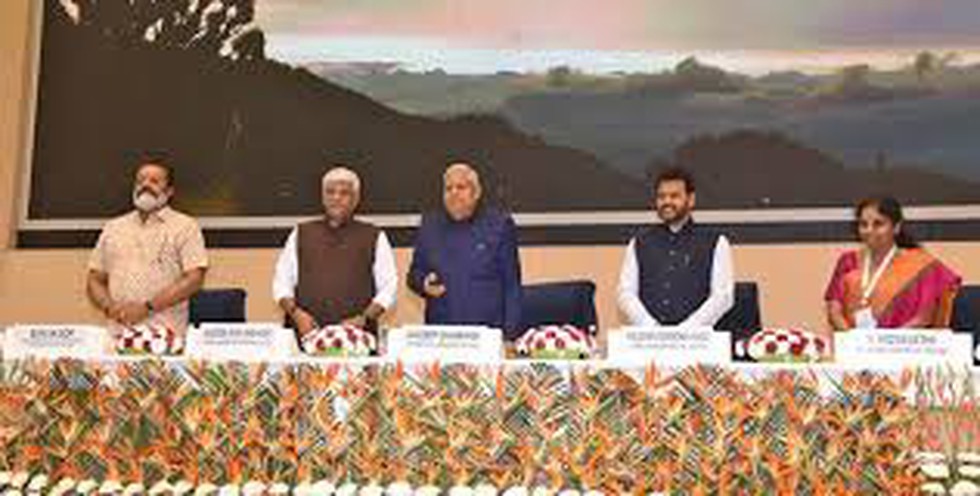
About Paryatan Mitra And Paryatan Didi Initiative:
- The primary aim of this initiative is to elevate the overall experience for tourists in destinations, by having them meet ‘tourist-friendly’ people who are proud Ambassadors and Storytellers for their destination.
- The vision of this initiative is to welcome one and all to experience Incredible India through Incredible Indians, thereby creating a more welcoming, hospitable, and memorable experience for tourists when in India.
- Paryatan Mitra and Paryatan Didi were piloted in six tourist destinations across India: Orchha (Madhya Pradesh), Gandikota (Andhra Pradesh), Bodh Gaya (Bihar), Aizawl (Mizoram), Jodhpur (Rajasthan), and Sri Vijaya Puram (Andaman & Nicobar Islands).
- Features
- Under this special emphasis is being placed on the training of women and youth to enable them to develop new tourism products & experiences like heritage walks, food tours, craft tours, nature treks, homestay experiences, and other innovative tourism products based on the potential of the destination.
- This training is driven by the ‘Athithi Devo Bhava’ philosophye treating tourists as honored guests.
- It is also envisioned that locals leverage these skills to obtain gainful employment going forward as homestay owners, food & cuisine experience providers, cultural guides, natural guides, adventure guides, and other roles in tourism.
- Tourism-specific training is being followed by general training in digital literacy and digital tools to ensure that the experiences they create are discoverable and visible to tourists, nationally and globally.
Prelims Pointers
Sept. 29, 2024
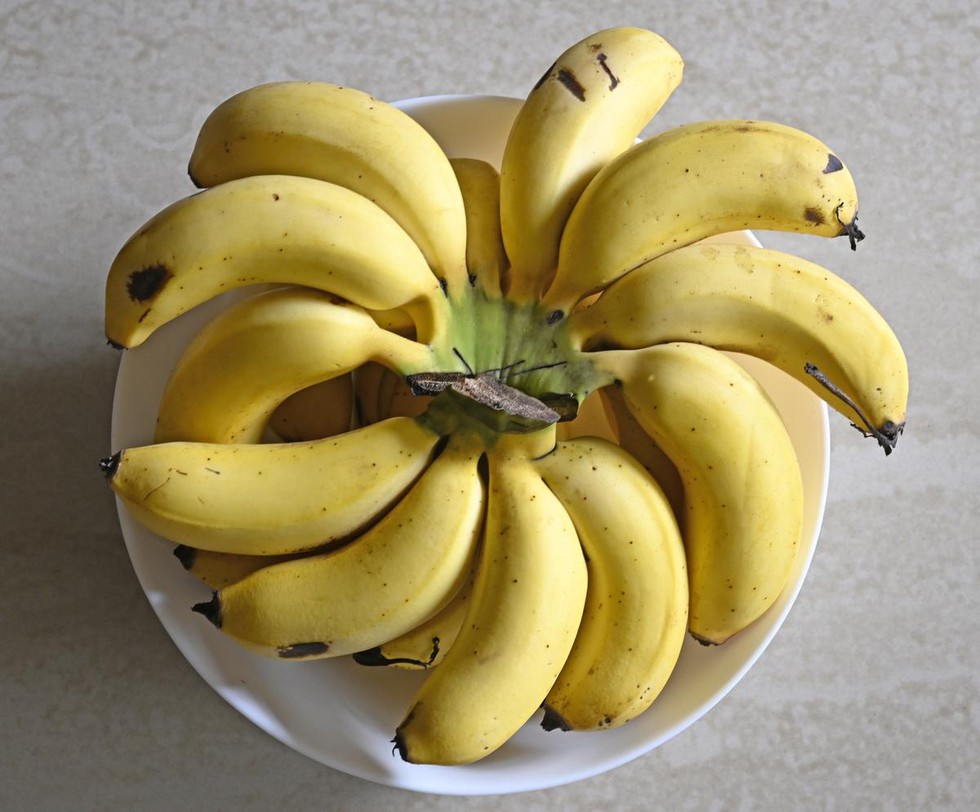
About Nanjangud Rasabale Banana:
- It is a variety of banana grown in and around the Mysore district and Chamarajanagar district of Karnataka.
- It was awarded the Geographical Indication (GI) tag in 2006 for its thick pulp and distinct taste and aroma.
- The taste and pulp of this banana cannot be found in any other variety and anywhere else.
- Soil required: Black clay alluvial saline soil has given a unique aroma to this banana.
- Fruits possess medicinal properties and are believed to cure neurological ailments.
- Threats: The Panama Wilt disease, a fungal infection caused by the Fuserium Wilt pathogen has been the bane of rasabale farmers.
What is the Geographical Indication (GI) tag?
- It is a sign used on products that have a specific geographical origin and possess qualities or a reputation that are due to that origin.
- Geographical Indications are part of the intellectual property rights that comes under the Paris Convention for the Protection of Industrial Property.
- In India, Geographical Indications registration is administered by the Geographical Indications of Goods (Registration and Protection) Act, 1999.
- Geographical indications are typically used for agricultural products, foodstuffs, wine and spirit drinks, handicrafts, and industrial products.
Prelims Pointers
Sept. 29, 2024
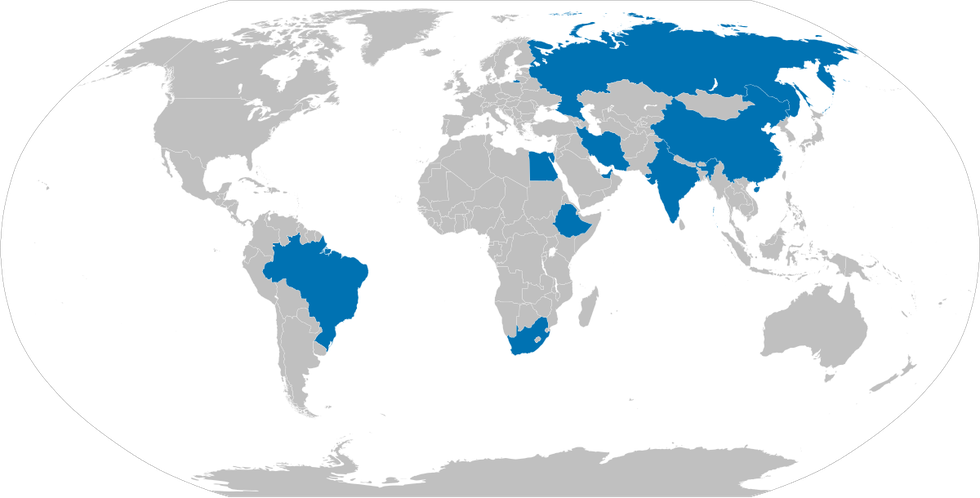
About ‘BRICS’ Grouping:
- BRICS is an acronym for Brazil, Russia, India, China, and South Africa, a bloc of countries that formed a partnership following the creation of the term in 2001 by Goldman Sachs economist Jim O'Neill (but it didn't include South Africa at the time).
- South Africa joined in 2010, making it "BRICS".
- The group was designed to bring together the world's most important developing countries to challenge the political and economic power of the wealthier nations of North America and Western Europe.
- The BRICS countries operate as an organization that seeks to further economic cooperation among member nations and increase their economic and political standing in the world.
- Saudi Arabia, Iran, Ethiopia, the United Arab Emirates, and Egypt joined BRICS in 2024.
- The expanded group has a combined population of about 3.5 billion, or 45% of the world's inhabitants.
- Combined, members' economies are worth more than $28.5tn - about 28% of the global economy.
- With Iran, Saudi Arabia and UAE as members, Brics countries produce about 44% of the world's crude oil.
Prelims Pointers
Sept. 29, 2024
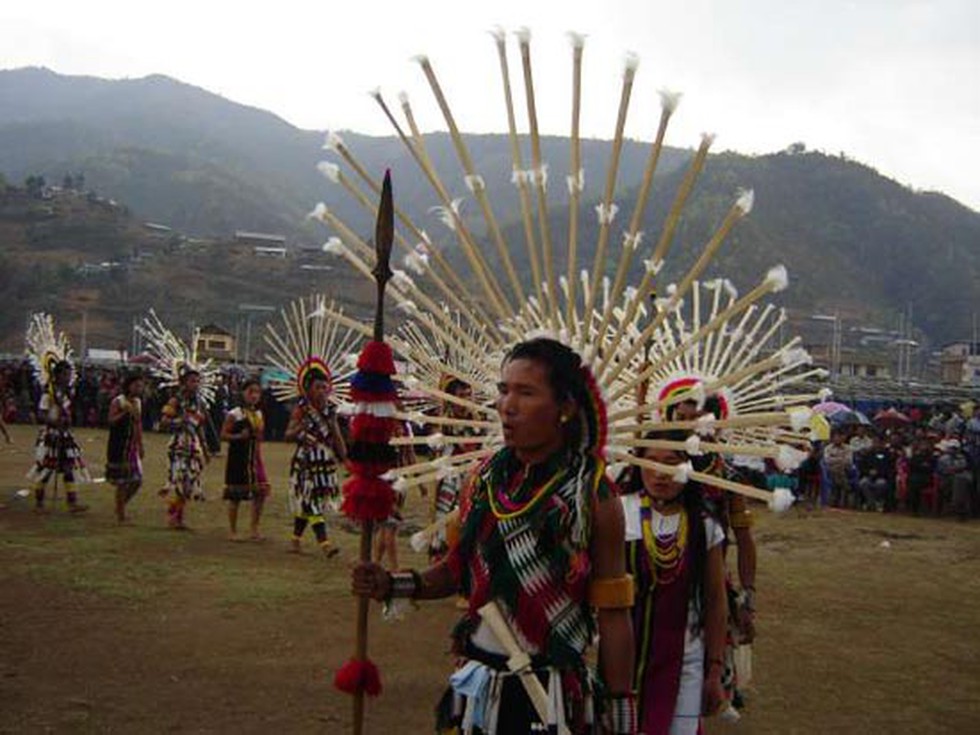
About Poumai Naga Tribe:
- The Poumai Naga tribe is an indigenous ethnic group primarily residing in the Senapati district of Manipur and parts of Nagaland.
- About 95.7% of the total population of Poumai is in the Senapati district, Manipur.
- It is one of the oldest and largest Naga tribes in Manipur.
- The language that Poumai communicates is known as "POULA".
- Christianity is the dominant religion in the Poumai Community.
- Their Pouli (Pottery) and Poutai (Pou salt) production was well known to the entire tribal areas in Manipur and Nagaland in ancient times.
- The main occupation of Poumai Naga is agriculture, and shifting cultivation is hardly practiced now in Poumai villages.
- Popular festivals:
- Paonii, Donii, Laonii, Daonii, Rounii, Duhnii, Loukanii, Thounii, Khiinii, Taithounii, etc.
- Laoniiis one of the important festivals celebrated in Poumai villages after the rice transplantation.
Prelims Pointers
Sept. 29, 2024

About Marburg Virus Disease:
- MVD, earlier known as Marburg hemorrhagic fever, is a rare but severe hemorrhagic fever that affects both people and non-human primates.
- Causative agent:MVD is caused by the Marburg virus, a genetically unique zoonotic (animal-borne) RNA virus. Marburg and Ebola viruses are both members of the Filoviridae family (filovirus).
- The virus takes its name from the German city of Marburg, where it was first identified in 1967 in a lab where workers had been in contact with infected green monkeys imported from Uganda.
- The reservoir host of the Marburg virus is the African fruit bat, Rousettus aegyptiacus.
- Transmission: The virus can be transmitted from bats to primates, including humans, and then spread through direct contact with blood or other body fluids from infected individuals.
- Symptoms:
- Initial Marburg disease signs and symptoms include Fever, Chills, Headache, Muscle aches, Rash with both flat and raised bumps, often on the torso, Chest pain, Sore throat, Nausea, vomiting, and diarrhea
- As the disease advances, symptoms can become more severe, including liver failure, delirium, shock, bleeding (hemorrhaging), and multi-organ dysfunction.
- Fatality: The average MVD case fatality rate is around 50%. Case fatality rates have varied from 24% to 88% in past outbreaks depending on virus strain and case management.
- Treatment:
- There is no treatment or vaccine for Marburg disease.
- Supportive therapy, such as intravenous fluids, electrolyte replacement, supplemental oxygen, as well as blood and blood products replacement, improves survival.
Prelims Pointers
Sept. 29, 2024

About Sea Robins:
- Sea robins belong to a family of ray-finned fish called Triglids, which inhabit diverse habitats ranging from shallow salt marshes to deep oceans around the world.
- They are found in warm and temperate seas of the world.
- Most Triglidae fish are benthic specialists that spend much of their time on the ocean bottom, where they hunt in the sand for fish, crustaceans, and other invertebrates.
- To facilitate their benthic lifestyle, sea robins have evolved a number of bizarre traits, the most iconic of which are their six leg-like appendages.
- They are elongated fish with armoured bony heads and two dorsal fins.
- Sea Robins get their name from their large wing-like pectoral fins.
- When excited or threatened, the Sea Robin will fan these fins out to look bigger and help it to blend in with the sandy bottom.
- These fins open and close while the fish swims much like a bird in flight.
- Some sea robins are scaly; the bodies of others are covered with bony plates.
- They are usually brightly coloured, and some have ornately patterned pectoral fins.
- They are also vocal and can produce audible soundswith their swim bladders and certain attached muscles.
Prelims Pointers
Sept. 29, 2024
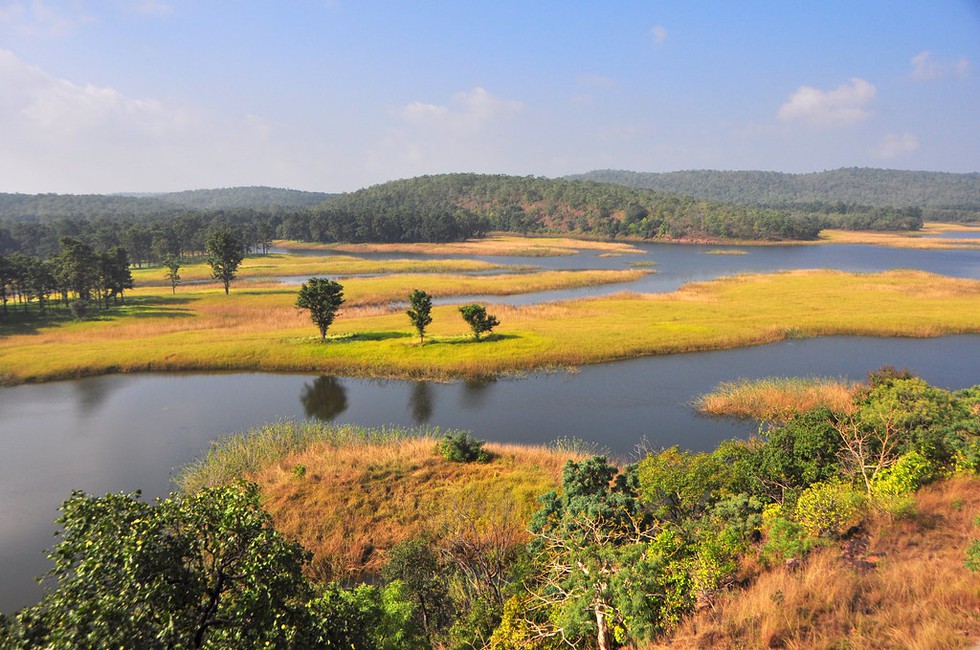
About Ratapani Wildlife Sanctuary:
- Location: Situated in Raisen and Sehore districts of Madhya Pradesh, it spreads over 825.90 sq km.
- This rocky forest with aquatic environment is spread on the Vindhya Hills.
- It runs parallel on the northern side of the Narmada River. The Kolar River forms the western boundary of the Sanctuary.
- The sanctuary has Bhimbetka,a group of rock shelters and rock paintings, which is one of the '' World Heritage Site '' declared by UNESCO.
- It also encompasses many other historical and religious destinations like Ginnourgarh Fort, POW camp, Keri Mahadeo, Ratapani dam, Jholiyapur dam, etc.
- Landscape: It is rugged with hills, valleys, plateaus, and plains.
- Flora:
- The forest of this Sanctuary is of dry deciduous and moist deciduous
- About 55% of the area is covered by teak. The remaining mixed forests consist of various dry deciduous species.
- Fauna:
- The regal striped cat is the apex predator, and estimates suggest that 40 tigers roam these forests.
- Chinkara, an endangered species, is also found in the Sanctuary.
- It is also home to animals like the Panther, Hyena, Jackal, Indian Fox, Wild Dog, Jungle Cat, Small Indian Civet, Blue Bull, Chinkara, Black Buck, Chausingha, Spotted Deer, Barking Deer, etc.
Prelims Pointers
Sept. 29, 2024

थर्मोबैरिक हथियारों के बारे में:
- इन्हें अक्सर “वैक्यूम बम” या “बढ़े हुए विस्फोट हथियार” कहा जाता है।
- कार्य
- इसमें दो अलग-अलग विस्फोटक चार्ज के साथ एक ईंधन कंटेनर होता है।
- इसे रॉकेट के रूप में लॉन्च किया जा सकता है या विमान से बम के रूप में गिराया जा सकता है। जब यह अपने लक्ष्य से टकराता है, तो पहला विस्फोटक चार्ज कंटेनर को खोलता है और ईंधन मिश्रण को बादल के रूप में व्यापक रूप से बिखेरता है।
- यह बादल किसी भी इमारत के उद्घाटन या बचाव में घुस सकता है जो पूरी तरह से सील नहीं है।
- फिर एक दूसरा चार्ज बादल को विस्फोटित करता है, जिसके परिणामस्वरूप एक विशाल आग का गोला, एक विशाल विस्फोट तरंग और एक वैक्यूम होता है जो आसपास के सभी ऑक्सीजन को सोख लेता है। हथियार मजबूत इमारतों, उपकरणों को नष्ट कर सकता है और लोगों को मार सकता है या घायल कर सकता है।
- प्रभाव: थर्मोबैरिक बमों द्वारा उत्पादित शॉकवेव संरचनाओं को नष्ट कर सकती है, जबकि विस्फोट के दबाव के अंतर से मानव शरीर को विनाशकारी क्षति होती है, जिसमें अंगों और फेफड़ों का फटना भी शामिल है।
- उनके उपयोग पर विशेष रूप से प्रतिबंध लगाने वाले कोई अंतर्राष्ट्रीय कानून नहीं हैं, लेकिन अगर कोई देश निर्मित क्षेत्रों, स्कूलों या अस्पतालों में नागरिक आबादी को लक्षित करने के लिए उनका उपयोग करता है, तो उसे 1899 और 1907 के हेग सम्मेलनों के तहत युद्ध अपराध का दोषी ठहराया जा सकता है।
Sept. 28, 2024
Prelims Pointers
Sept. 28, 2024

About ABHED Bulletproof Jacket:
- ABHED (Advanced Ballistics for High Energy Defeat) developed by DRDO and IIT Delhi.
- These jackets have been created from polymers and indigenous boron carbide ceramic
- The design configuration is based on characterisation of various materials at high strain rate followed by appropriate modelling and simulation.
- The new jackets are capable of mitigating the highest threat levels and are lighter than the maximum weight limits stipulated for the Army.
- It will enhance soldier protection and mobility.
- With a minimum possible weight of 8 kg and 9.3 kg for different BIS levels, these modular-design jackets, featuring front and rear armour, provide 360-degree protection.
- The jackets have been classified as BIS level 5 and BIS level 6, by the Bureau of Indian Standards (BIS), which issues standards for bullet-resistant jackets and ballistic shields for the Indian Army.
- The design ensures 360-degree protection through modular armour plates that can be adapted for different mission requirements, providing soldiers with flexibility in various combat scenarios.
Prelims Pointers
Sept. 28, 2024
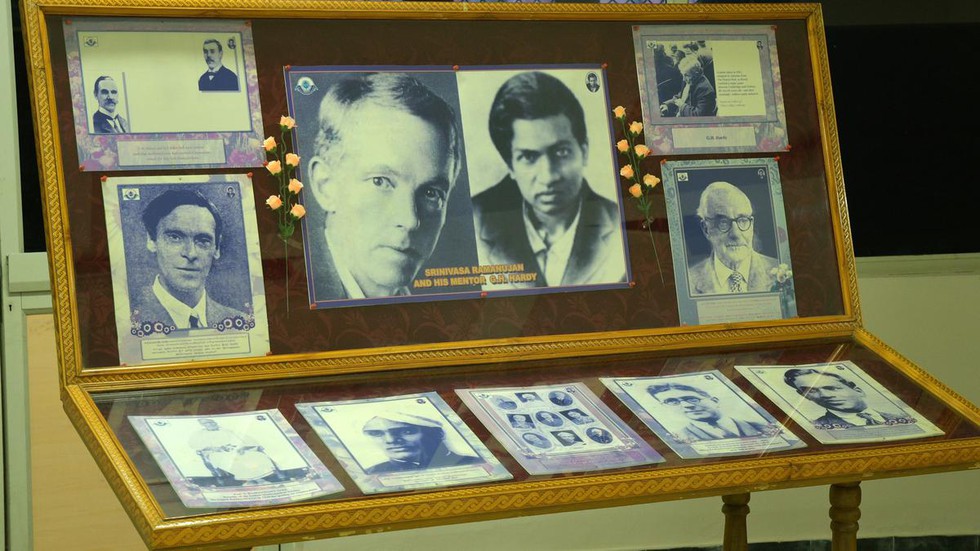
About SASTRA Ramanujan Prize:
- It was instituted in the year 2005.
- It is awarded every year by the SASTRA University on its campus near Kumbakonam in Tamil Nadu, on Ramanujan’s birth anniversary, December 22.
- Eligibility:
- The prize is conferred annually to mathematicians from across the world who is less than 32 years of age, working in an area influenced by the Srinivasa Ramanujan.
- The age limit is 32 years to commemorate the fact that Ramanujan accomplished a phenomenal body of work in this short span.
- Cash prize:It carries a citation and an award of $10,000.
- This award has gained global repute ever since it was instituted.
- Other recipients:Manjul Bhargava and Akshay Venkatesh
Contribution of Dunn
- Dunn is being recognized for his outstanding contributions to analytic number theory, particularly his joint work with Maksym Radziwill in solving the Kummer-Patterson Conjecture on bias related to cubic Gauss sums.
- His work represents a significant breakthrough in the field.
Prelims Pointers
Sept. 28, 2024

About Global Innovation Index:
- It is published by the World Intellectual Property Organization.
- It is a reliable tool for governments across the world to assess the innovation-led social and economic changes in their respective countries
Key Highlights of the Global Innovation Index 2024
- India has been ranked first among 10 economies in Central and Southern Asia, further emphasizing its regional dominance in innovation.
- India has also secured the 4th position in the World Intellectual Property Organization (WIPO) Science and Technology (S&T) Cluster Ranking.
- Major cities like Mumbai, Delhi, Bengaluru, and Chennai are listed among the world's top 100 S&T clusters, which are hubs for research, development, and technological advancements.
- India has achieved the 7th rank globally in intangible asset intensity, which measures the strength of non-physical assets like patents and trademarks, essential for driving innovation.
Key points about the World Intellectual Property Organisation
- It works with the vision of encouraging creative activity and promoting the protection of Intellectual Property throughout the world.
- WIPO is one of the 15 specialised agencies of the United Nations.
- Currently, there are 193 members of the World Intellectual Property Organisation.
- Headquarter:
Prelims Pointers
Sept. 28, 2024
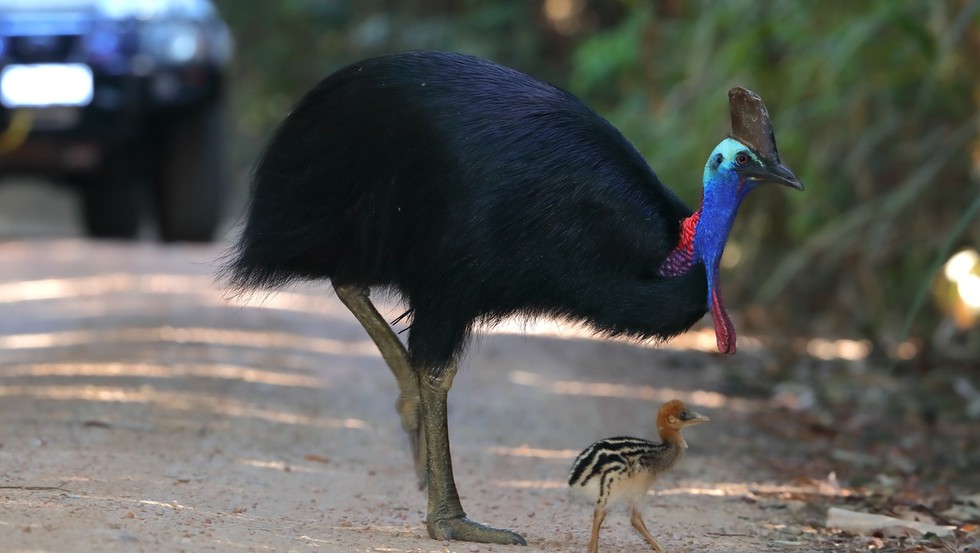
About Cassowary:
- It is a large, flightless bird most closely related to the E It is considered the most dangerous bird in the world.
- They are strong swimmers and can move quickly on both land and water.
- It has been stated that cassowaries are shy and they are usually hard to spot, at least in their natural rain forest habitats.
- Distribution: It is native to New Guinea and found in Australian
- There are three species of cassowary.
- The southern, or double-wattled cassowary (Casuarius casuarius) is the largest of the three. It inhabits lowland rainforest and is also found in eucalyptus forests or forested swamps.
- The northern or single-wattled cassowary (Casuarius unappendiculatus) inhabits the coastal swamps and lowland rainforests of northern New Guinea.
- The dwarf cassowary is smaller than the other two species of cassowary, usually weighing around 50 pounds. Their habitat is at a higher altitude, and they are generally found in more steep mountainous terrain,
- Ecological Significance: They remain a significant disperser of seeds from native plants between rainforest patches and remain essential in maintaining native plant diversity.
- Cultural Significance
- They are culturally important for some Aboriginal groups, and they sometimes feature in traditional ceremonies, dances and Dreamtime narratives.
- Several of these indigenous groups are now involved in cassowary conservation, using traditional ecological knowledge along with modern science.
Prelims Pointers
Sept. 28, 2024

About Philadelphi corridor:
- It is a ribbon of land about 14kms in length and 100 metres wide along Gaza’s border with Egypt.
- It was designated as a demilitarised border zone after the withdrawal of Israeli settlements and troops from Gaza in 2005 and runs from the Mediterranean to the Kerem Shalom crossing with Israel.
- The Corridor was originally established under the 1979 Israel-Egypt peace treaty as a 100-meter-wide buffer zone.
- The zone was later expanded beginning during the Second Intifada to be several hundred meters wide. It covers the entire 8.7-mile-long border.
- The Rafah crossing between Egypt and Gaza is within the Philadelphi Corridor.
- In 2005, as part of Israel’s unilateral withdrawal from Gaza, Egypt and Israel signed an agreement by which Egypt would secure the border between Egypt and Gaza to prevent the smuggling of weapons into the Strip.
- Egypt maintains a one-kilometer-wide buffer zone on its side of the border, with plans to expand it.
Prelims Pointers
Sept. 28, 2024
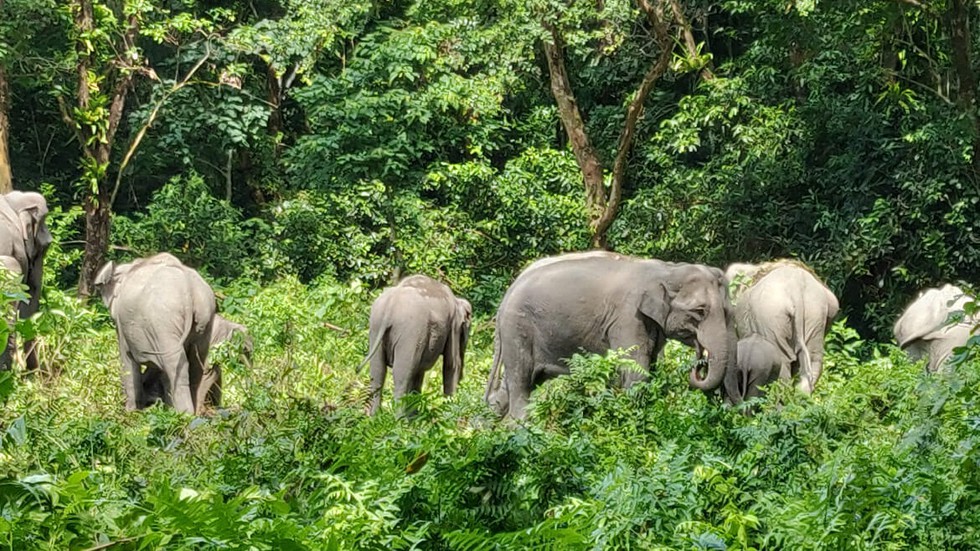
About Manas National Park and Tiger Reserve:
- It is located in the foothills of Himalayas in Assam. It is contiguous with the Royal Manas National Park in Bhutan.
- The area has a unique distinction of being a Natural World Heritage Site, a Tiger Reserve, an Elephant Reserve, a Biosphere Reserve and an Important Bird Area.
- It is one of the first reserves included in the tiger reserve network under project tiger in 1973.
- It forms part of a large tiger conservation landscape which includes Buxa-Nameri-Pakke-Namdapha tiger reserves and protected areas of Bhutan and Myanmar.
- The name of the park originates from the Manas River, which is named after the serpent goddess Manasa.
- The Manas River is a major tributary of Brahmaputra River, which passes through the Manas National Park.
- Flora: In general, the vegetation comprises of Sal (Shorea robusta), scrub forests, old plantations (in buffer areas), semi-evergreen and mixed deciduous forests, interspersed with grasslands and riparian vegetation (in core area).
- Fauna: The Park is known for its rare and endangered endemic wildlife such as the Hispid Hare, Pygmy Hog, Golden Langur, Indian Rhinoceros, Asiatic Buffalo etc.
Prelims Pointers
Sept. 28, 2024

About KH-22 Cruise Missile:
- It is a Soviet-era long-rangeairborne supersonic cruise missile.
- It is also known by the NATO reporting name AS-4 'Kitchen'.
- The Kh-22 family was developed in the USSR in the 1960s and specifically designed to be launched from Tupolev-22 bombers.
- This missile was intended primarily to destroy large naval targets like aircraft carriers, using either conventional or nuclear warheads.
- It boasts impressive specifications, including a speed of up to Mach 4.6 and a range of approximately 600 kilometers.
- It weighs 5,820 kilograms.
- A total of approximately 3,000 such missiles were produced in the USSR.
- After the USSR collapsed, quite a few of them remained in Ukraine. However, soon after independence in 1991, Ukraine gave up its nuclear and strategic aviation arsenal.
- In 2000, Ukraine transferred 386 Kh-22 missiles to Russia as an installment against the gas debt.
- The successor to the Kh-22 became the Kh-32, which can be carried by the new Russian Tu-22M3M bombers.
- The new missile features a conventional warhead, an improved rocket motor, and a new radar imaging terminal seeker. It has a longer range but a smaller warhead.
Prelims Pointers
Sept. 28, 2024
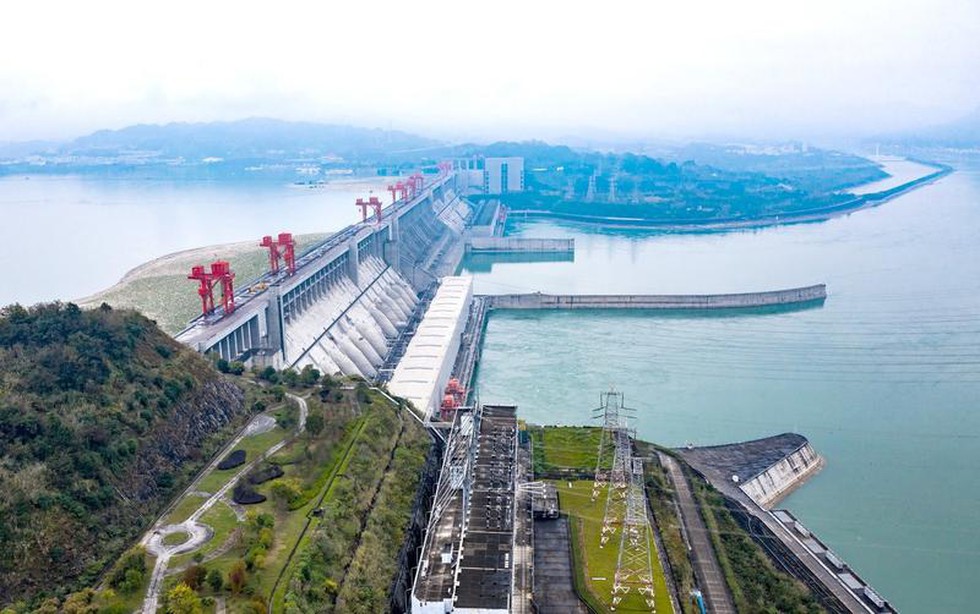
About Three Gorges Dam:
- It is located on the Yangtze River in China’s Hubei Province.
- It is the world’s largest hydroelectric power station.
- The dam was completed in 2012 after nearly two decades of construction.
- Its staggering dimensions—2,335 metres (7,660 feet) long and 185 metres (607 feet) high—make it the largest dam ever built.
- The dam’s reservoir has a capacity of 40 cubic kilometres (about 10 trillion gallons) of water, which can produce up to 22,500 megawatts of electricity.
- The dam uses the flow of water from the three closest gorges, known as Qutangxia, Wuxia, and Xilingxia, for spinning the turbine and generating electricity
- Beyond its hydroelectric capabilities, the dam is intended to increase the Yangtze River's shipping capacity and reduce the potential for floods downstream by providing flood storage space.
Key Facts about Yangtze River:
- It is the longest river in both China and Asiaand third longest river in the world, with a length of 3,915 miles (6,300 km).
- It is also considered the longest river to exclusively flow within the borders of a single nation.
- Its basin drains an area of 698,265 square miles (1,808,500 sq.km).
- From its source on the Plateau of Tibet to its mouth on the East China Sea, the river traverses or serves as the border between 10 provinces or regions.
- More than three-fourths of the river’s course runs through mountains.
- The Yangtze has eight principal tributaries. On its left bank, from source to mouth, these are the Yalung, Min, Jialing, and Han rivers; those on the right bank include the Wu, Yuan, Xiang, and Gan rivers.
Prelims Pointers
Sept. 28, 2024

About GST Compensation Cess:
- It is levied under Section 8 of The Goods and Services Tax (Compensation to State) Act, 2017.
- Why is GST Cess Levied?
- As GST is a consumption-based tax, the state in which the consumption of goods and supply happen would be eligible for the indirect tax revenue.
- Hence, after GST comes into effect, some states that are net exporters of goods and/or services are expected to experience a decrease in indirect tax revenue.
- To compensate the States for the loss in tax revenue, the GST Compensation Cess has been declared by the Central Government.
- Usage of GST Cess:
- All the proceeds received from the GST compensation cess would be credited to a non-lapsable fund known as the GST Compensation Fund.
- The funds would then be used for compensating tax revenue loss to States on account of GST implementation.
- If any funds are unutilized, then at the end of the transition period, it would be shared in half by the Central Government and all State Governments.
- The State government’s share would be distributed in the ratio of their total revenues from the State tax or the Union territory goods and services tax, in the last year of the transition period.
- Applicability:
- GST Cess would be applicable to both the supply of goods or services that have been notified by the Central Government.
- Also, both intrastate supplies of goods or services and interstate supplies of goods or services would attract GST cess.
- All taxable persons under GST, except taxpayers registered under the GST composition schemeis expected to collect and remit GST cess.
- In the GST regime, compensation cess at varied rates is levied on luxury, sin, and demerit goods (cigarettes, pan masala, gutkha, and other tobacco products, soft drinks, cars, etc.).
- In 2022, the GST Council decided to extend the levy till March 2026 to repay the interest and the principal amount of the Rs 2.69 lakh crore worth loan taken in the 2021 and 2022 fiscal years to make good states' revenue loss during Covid years.
Prelims Pointers
Sept. 28, 2024

About Active Galactic Nucleus (AGN):
- An AGN is an extremely bright central region of a galaxy that is dominated by the light emitted by dust and gas as it falls into a black hole.
- The extremely luminous central region emits higher radiation that can outshine the rest of the galaxy altogether.
- AGNs emit radiation across the entire electromagnetic spectrum, from radio waves to gamma rays.
- This radiation is produced by the action of a central supermassive black hole that is devouring material that gets too close to it.
- A galaxy hosting an AGN is called an ‘active galaxy’.
- AGNs are the most luminous, persistent sources of electromagnetic radiation in the Universe. This means they can be used to discover distant objects.
- Astronomers have also classified different types of AGN based on their observed characteristics.
- The most powerful AGNs are known as quasars, which give rise to extremely luminous galactic centres.
- A blazar is an AGN with a jet of light and energy that is pointed toward the Earth.
Sept. 27, 2024
Prelims Pointers
Sept. 27, 2024

About Llama 3.2:
- It is an open-source large language model developed by Meta.
- Features
- It has both image and text processing abilities.
- It includes voice interaction features, allowing users to engage in conversations with the AI using voice commands.
- This model includes both small and medium-sized variants at 11-billion and 90-billion parameters as well as more lightweight text-only models at 1-billion and 3-billion parameters that fit into select mobile and edge devices.
- Out of the different Llama 3.2 variants, the 11-billion parameter one and the 90-billion parameter one are vision models and can understand charts and graphs, caption images and locate objects from natural language prompts.
- The bigger model can also pinpoint details from images to create captions.
- Applications: The models will help developers create more advanced AI applications like AR apps with a real-time understanding of video, visual search engines that distribute images based on content, or document analysis tools that can summarise large portions of text.
Prelims Pointers
Sept. 27, 2024

About GlobE Network:
- The Global Operational Network of Anti-Corruption Law Enforcement Authorities (GloBE Network) was an initiative of G-20.
- The GloBE Network was officially launched on June 3, 2021, during a special event at the UN General Assembly Special Session against Corruption.
- It now has 121 member countries and 219 member authorities.
- It is emerging as a unique platform where agencies from across the world share best practices and criminal intelligence, develop strategies, and support in the common cause of combating corruption.
- The steering committee, consisting of one chair, one vice-chair, and 13 members, provides leadership and direction for the organisation.
- India’s Central Bureau of Investigation (CBI) and Enforcement Directorate (ED) are part of the network, with the Union Ministry of Home Affairs (MHA) acting as the central authority for India.
- The Network is governed by its members and is supported by the United Nations Office against Drugs and Crime (UNODC) which provides the Network’s secretariat.
- During India’s G-20 Presidency in 2023, two high-level principles for combating corruption were adopted which detailed leveraging of the GloBE Network.
Prelims Pointers
Sept. 27, 2024
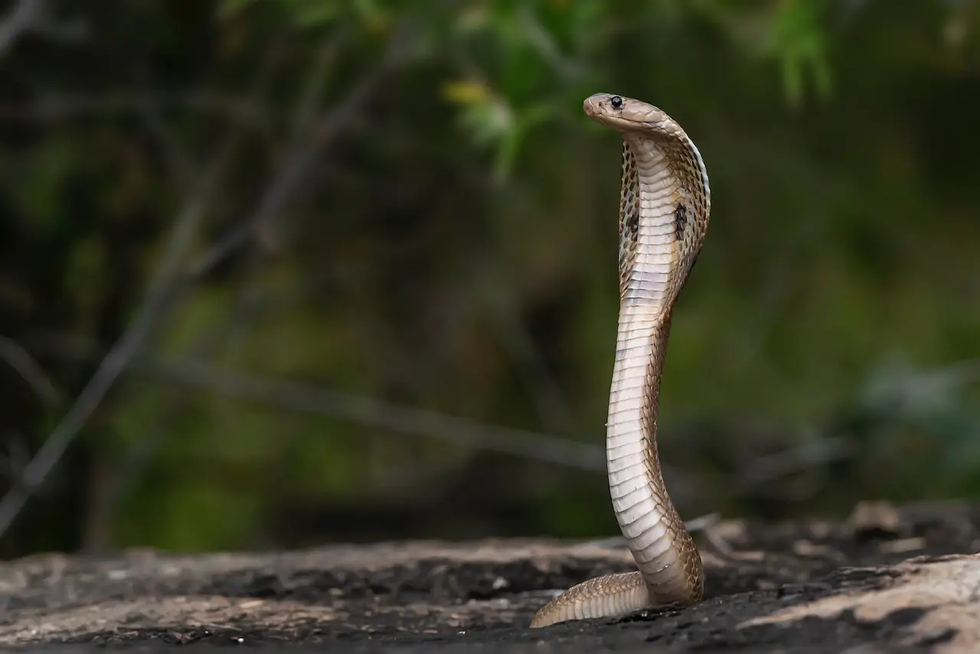
About Monocled Cobra:
- It is a venomous cobra species widespread across South and Southeast Asia.
- Some populations of the Monocled cobra have the ability to spit venom, earning them the name "Indian spitting cobra".
- They have an O-shaped, or monocellate hood pattern, which has the "spectacle" pattern on the rear of their hood.
- Habitat:
- It prefers habitats associated with water, such as paddy fields, swamps, and mangroves, but can also be found in grasslands, shrublands, and forests.
- It is also found in agricultural land and human settlements including cities.
- Distribution: It inhabits eastern and northeastern India, Nepal, Bangladesh, Myanmar, Thailand, Vietnam, Malaysia, and southern China.
- Ecological significance: They play an important role in their ecosystem. They help to maintain the balance of prey species and control agricultural pests such as rats and mice.
- Conservation status
- IUCN Red List: Least Concern (LC)
Prelims Pointers
Sept. 27, 2024

About PARAM Rudra Supercomputer:
- It is designed to tackle complex computational challenges across various scientific and engineering domains.
- Three Param Rudra supercomputers have been developed indigenously under the National Supercomputing Mission.
- They have been deployed at three key locations: Delhi, Pune and Kolkata.
- In Pune, the Giant Metre Radio Telescope (GMRT) will leverage the supercomputer to explore Fast Radio Bursts (FRBs) and other astronomical phenomena.
- In Delhi, Inter University Accelerator Centre (IUAC) will enhance research in fields like material science and atomic physics.
- In Kolkata, S N Bose Centre will use supercomputing technology to drive advanced research in areas such as physics, cosmology, and earth sciences.
What is a High-Performance Computing (HPC) system?
- It is tailored for weather and climate research.
- It is located at two key sites, the Indian Institute of Tropical Meteorology (IITM) in Pune and the National Center for Medium Range Weather Forecast (NCMRWF) in Noida, this HPC system has extraordinary computing power.
- The new HPC systems are named 'Arka' and 'Arunika,' reflecting their connection to the Sun.
- Significance: These high-resolution models will significantly enhance the accuracy and lead time of predictions related to tropical cyclones, heavy precipitation, thunderstorms, hailstorms, heat waves, droughts, and other critical weather phenomena.
Key facts about the National Supercomputing Mission
- It was launched in 2015 to provide the country with supercomputing infrastructure to meet the increasing computational demands of academia, researchers, MSMEs, and startups.
- It aims to create a network of advanced computing systems across India.
- It is a collaboration between the Ministry of Electronics and Information Technology (MeitY) and the Department of Science and Technology (DST).
It is implemented by the Centre for Development of Advanced Computing (C-DAC), Pune and the Indian Institute of Science (IISc), Bengaluru.
Prelims Pointers
Sept. 27, 2024
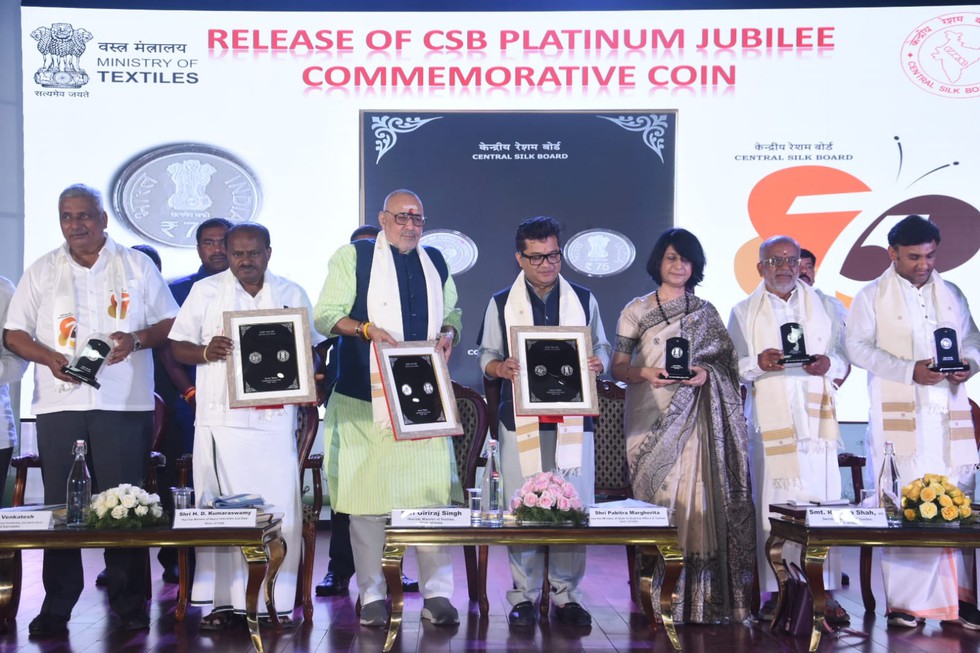
About Central Silk Board
- It is a Statutory Body established in 1948, by an Act of Parliament.
- It functions under the administrative control of the Union Ministry of Textiles, Government of India.
- It comprises 39 members appointed as per the powers and provisions conferred by Sub-Section 3 of Section 4 of the CSB Act 1948, for a period of 3 years.
- The Chairperson of the Board to be appointed by the Central Government.
- Functions
- It advises the Central Government on all matters relating to production, supply, distribution, trade and commerce in silk-worm seed, the development of the silk industry and its products including export and import.
- It has established 6 Regional Offices at New Delhi, Mumbai, Kolkata, Hyderabad, Bhubaneshwar and Guwahati.
- Headquarters: Bengaluru
Silk Production in India
- India has the unique distinction of being the only country producing all the five known commercial silks, namely, mulberry, tropical tasar, oak tasar, eri and muga.
- India is the second largest producer of silk in the world.
Prelims Pointers
Sept. 27, 2024
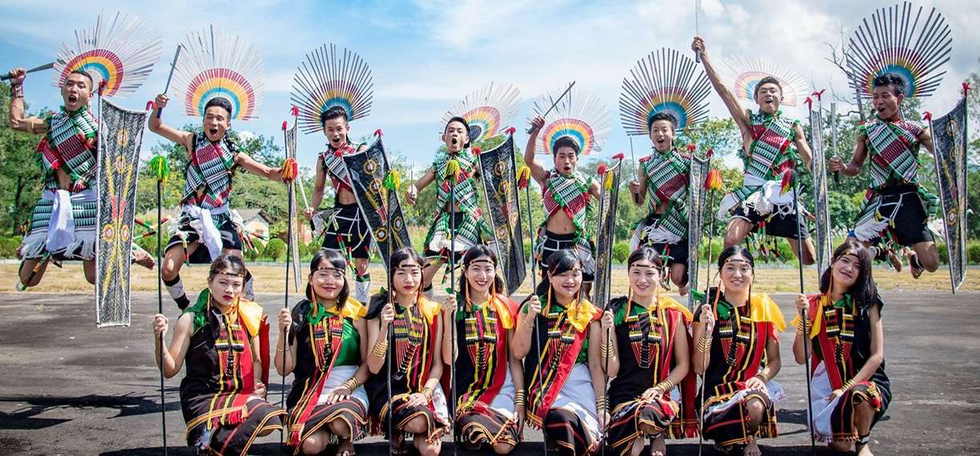
About Mao Nagas:
- Mao Naga is one of the indigenous tribes of Northeast India.
- It is one of the Naga tribes in Manipur.
- Language: Their language is called Mao, and also the whole land area inhabited by them is also called Mao.
- The Mao Nagas call themselves Ememei or Memei in their language.
- Mao is geographically situated in the northern part of Manipur, adjoining the southern part of Nagaland.
- According to the 2011 provisional census, Mao has a population of 97,195.
- The Mao Nagas live in a compact and well-protected village usually situated in the hilltop and mountain ridges.
- Their society follows a patriarchal system where descent is traced through the male lineage.
- Like any other Naga community, the Mao Naga is divided into different clans (Opfuta), which are further divided into sub-clans.
- Economy:
- The economy of the Mao Nagas is predominantly agrarian, and rice is their staple food.
- Terraced rice cultivation (both dry and wet) is a customary practice that Mao people have been engaged in through generations.
- They emphasized cooperative and collective endeavors and believed in the system of distribution in the form of a barter system or mutual exchange.
- Religion:
- Before the advent of Christianity, the Mao Naga had their traditional religion known as ‘Opfupe Chüna-Chüno’ (religion of the forefather).
- They believe in the existence of a Supreme being called ‘Iyi Koki Chüku Kapi Oramei’ (a benevolent God who protects and nurtures man).
- Today, the majority of the Mao Nagas have embraced Christianity.
Festivals: There are four main festivals celebrated by the Mao Nagas. They are Chüthuni, Chüjüni, Saleni, and Onuni.
Prelims Pointers
Sept. 27, 2024
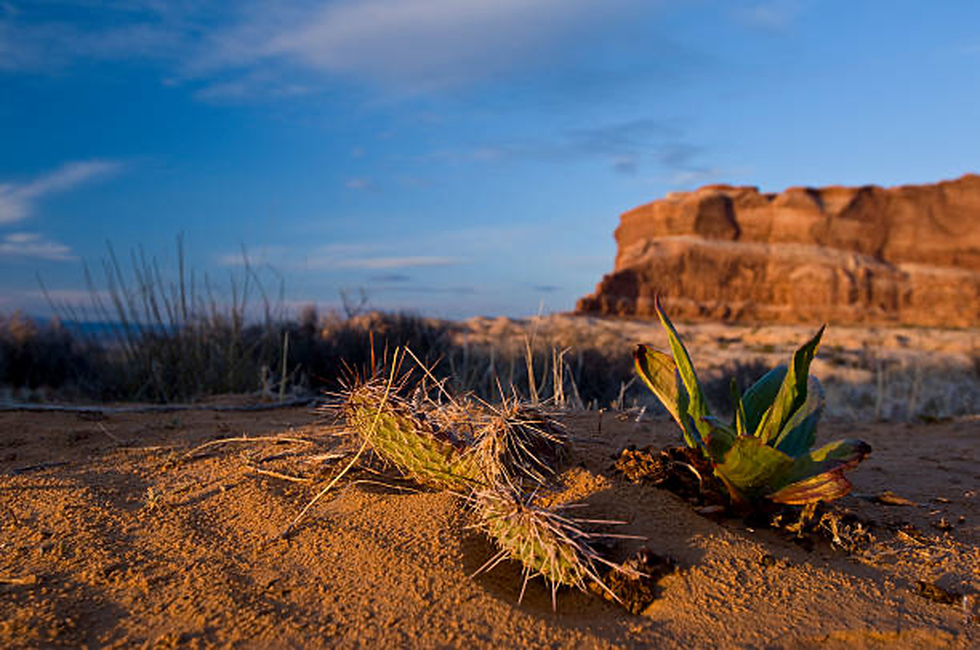
About Great Sandy Desert:
- It is an arid wasteland of northern Western Australia.
- It is Australia’s second largest desert, after the Great Victoria Desert, and encompasses an area of 284,993 sq.km.
- It extends from Eighty Mile Beach on the Indian Ocean eastward into the Northern Territory and from Kimberley Downs southward to the Tropic of Capricorn and the Gibson Desert.
- It is typified by longitudinal sand ridges, chains of large salt lakes, and occasional low rocky hills interlaced with Triodia (Spinifex) grass.
- The Gibson Desert lies to the south, and the Tanami Desert lies to the east of the Great Sandy Desert.
- Climate: It experiences exceptionally high daytime temperatures and overnight temperatures, along with far below average humidity levels.
- The region is not very populated. The main population is made up of Indigenous Australians. There are two main tribes; Martu in the west and Pintupi to the east.
Prelims Pointers
Sept. 27, 2024
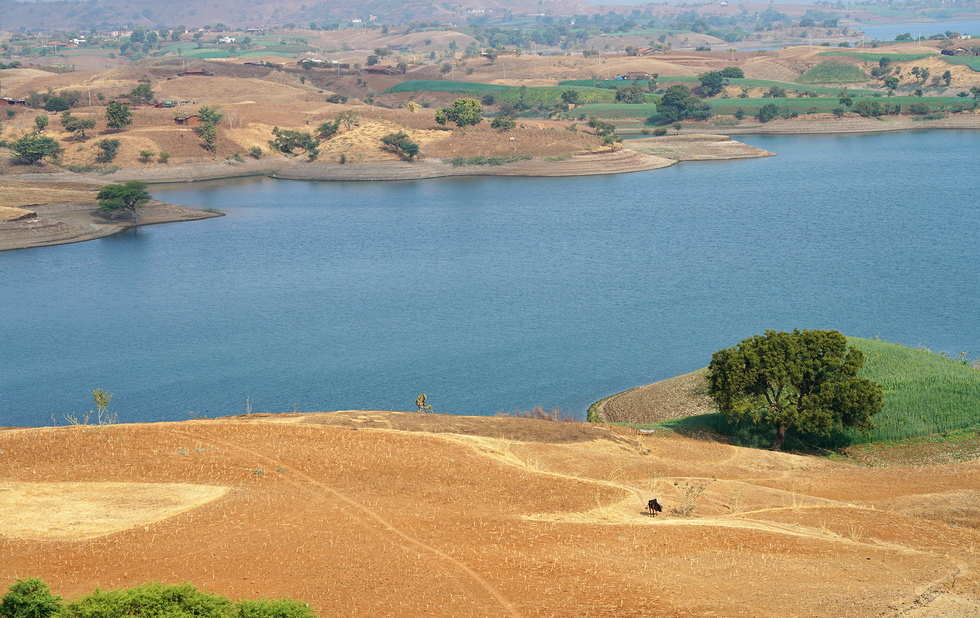
About East Rajasthan Canal Project (ERCP):
- It is an ambitious project of Rajasthan State to harvest the excess water present in the rivers, especially in southern Rajasthan, and use that water for drinking and irrigation purposes in south-eastern Rajasthan, where there is scarcity.
- It envisages intra-basin transfer of water within the Chambal Basin by utilising surplus monsoon water available in Kalisindh, Parvati, Mej, and Chakan sub-basins and diverting it into water deficit sub-basins of Banas, Gambhiri, Banganga, and Parbati to provide drinking and industrial water to 13 districts of eastern Rajasthan.
- The project also envisages irrigation in about 2.82 lakh hectare area.
- The project will also supply water to the Delhi-Mumbai Industrial Corridor and take care of the flood and drought situation in the area.
Key Facts about Chambal River:
- It is a tributary of the Yamuna River in central India and thus forms part of the greater Gangetic drainage system.
- Course:
- Origin: It originates at the Singar Chouri peak on the northern slopes of the Vindhya mountains.
- The river flows north-northeast through Madhya Pradesh, running for a time through Rajasthan, then forms the boundary between Rajasthan and Madhya Pradesh before turning southeast to join the Yamuna in Uttar Pradesh.
- The basin is bounded by the Vindhyan mountain ranges and the Aravallis.
- The Hadauti plateau in Rajasthan occurs in the upper catchment of the Chambal River to the southeast of the Mewar Plains.
- It is one of the most pollution-free rivers in India.
- Tributaries: Banas, Kali Sindh, Sipra, Parbati, etc.
- Major Dams on the River: Gandhi Sagar Dam, Rana Pratap Sagar Dam, Jawahar Sagar Dam.
- The National Chambal Sanctuary is situated along the river Chambal on the tri-junction of Rajasthan, Madhya Pradesh, and Uttar Pradesh.
Prelims Pointers
Sept. 27, 2024

About Spiral Galaxy:
- Spiral galaxies are twisted collections of stars and gas that often have beautiful shapes and are made up of hot, young stars.
- In a spiral galaxy, the stars, gas, and dust are gathered in spiral arms that spread outward from the galaxy's center.
- Most of the galaxies that scientists have discovered so far are spiral galaxies, as opposed to the other two main categories of galaxy shapes—elliptical and irregular.
- Approximately 60% of all galaxies are thought to be spiral galaxies.
- The Milky Way, the galaxy that includes Earth and our solar system, is an example of a spiral galaxy.
- Structure:
- Most spiral galaxies contain a central bulge surrounded by a flat, rotating disk of stars.
- The bulge in the center is made up of older, dimmer stars and is thought to contain a supermassive black hole.
- Approximately two-thirds of spiral galaxies also contain a bar structure through their center, as does the Milky Way.
- The disk of stars orbiting the bulge separates into arms that circle the galaxy.
- These spiral arms contain a wealth of gas and dust and younger stars that shine brightly before their quick demise.
- The majority of spiral galaxies rotate in the sense that the arms trail the direction of the spin.
- The visible portion of spiral galaxies contains only a small fraction of the total mass of the galaxy, and that spiral galaxies are surrounded by an extensive halo consisting mostly of dark matter.
- Spiral galaxies are thought to evolve into elliptical galaxies as the spirals get older.
Prelims Pointers
Sept. 27, 2024
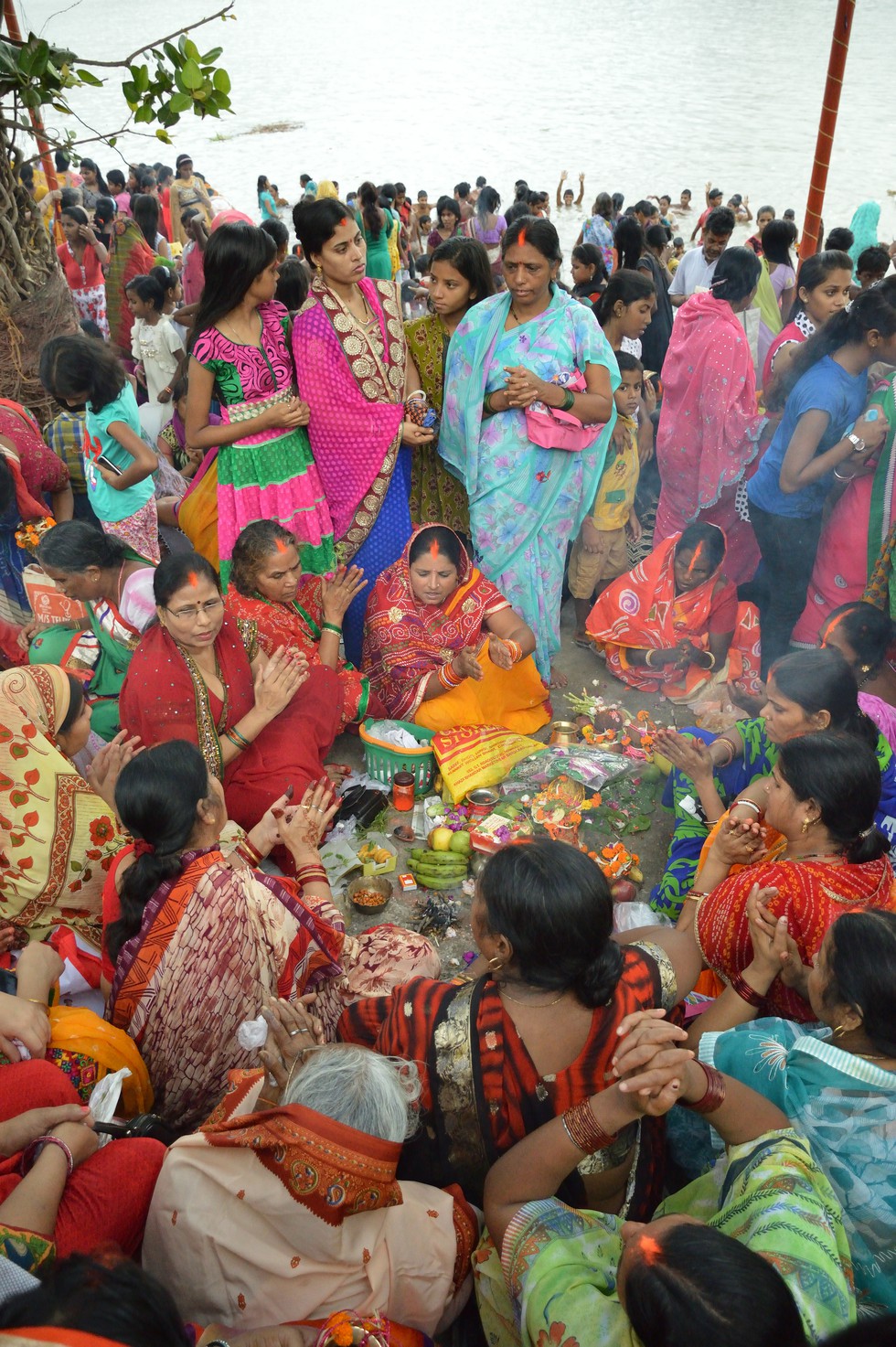
About Jivitputrika Festival:
- Jivitputrika, or Jitiya Vrat, is a Hindu festival observed primarily in the northern and eastern parts of India, including Bihar, Uttar Pradesh, Jharkhand, and Nepal.
- It is celebrated by mothers who fast for the well-being, long life, and prosperity of their children.
- The festival spans three days, with the main ritual involving a strict ‘nirjala’ fast, meaning no water is consumed during the fast.
- The fast is considered an expression of a mother's devotion and love, with the belief that it will bring divine blessings upon her children.
- The festival is rooted in Hindu mythology, particularly the story of King Jimutavahana, whose sacrifice for the welfare of others is commemorated during this time.
- The celebration begins with Nahai-Khai, where mothers take a purifying bath and eat a nourishing meal.
- The second day is marked by the rigorous fasting ritual, and the festival concludes on the third day with Paaran, where the fast is broken with a meal.

